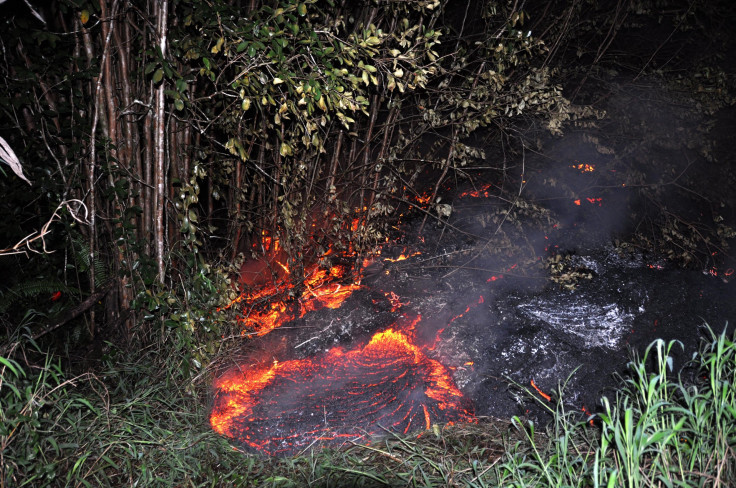Hawaii Volcano Update: Kilauea Lava Flow Increasing; Cracks Mean Growing Instability Of Sea Cliff

Lava from the Kilauea volcano has risen to just 52 feet below the floor of the Halema’uma’u crater, threatening communities as it makes its way into the sea at Kamokuna, the U.S. Geological Survey reported Thursday.
The USGS said the lava lake surface has changed little in the past day and seismic activity is within normal levels. It has been emitting 3,000 to 7,100 metric tons of sulfur dioxide a day for the past week.
The lava flow, dubbed 61g, is concentrated along the front of the easternmost delta. The National Park Service reported some small collapses. Prominent cracks in the surface were spotted Thursday, indicating growing instability, with the new land created by the lava seen as unstable because it is built on unconsolidated lava fragments and sand, USGS said.
“This loose material can easily be eroded away by surf, causing the new land to become unsupported and slide into the sea. In several instances, such collapses, once started, have also incorporated parts of the older sea cliff,” USGS said. Additionally, the interaction of lava with ocean water creates a plume containing hydrochloric acid and fine volcanic particles that can irritate the skin, eyes and lungs.
The lava is flowing from Puʻu ʻŌʻō on Kilauea’s southern flank.
Maui Now warned visitors viewing the lava flow to be aware of walking hazards on steep sea cliffs. Flying debris also is a concern.
A skylight, an opening in the roof above a lava tube from where lava can be seen flowing, opened on the coastal plain in late September just moments after visitors walked through the area, Volcanoes National Park reported.
A number of explosions have been reported in the last week, the result of rocks falling into the lava lake. Bits of molten lava, known as spatter, litter Crater Rim Drive.
© Copyright IBTimes 2024. All rights reserved.






















